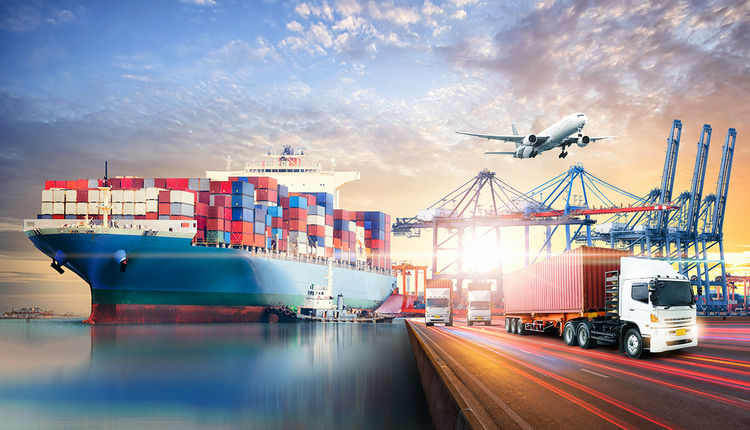“The world is your oyster.” Everyone has heard the saying, and every day, it is becoming more and more of a reality, especially in the retail industry. If customers want an item, they will find a way to get it, no matter where the retailer is located. International commerce doesn’t scare the average shopper anymore. Instead, consumers are searching across the globe in order to find the lowest price and fastest delivery time to get the products they want. They truly view the world as their oyster when it comes to their buying needs, and this global customer base is eagerly waiting for more retailers to begin offering their products on a worldwide level.
If a retailer hasn’t already started offering international shipping, now is the time. Global e-commerce is only continuing to grow. According to Statistica, by 2021, worldwide e-commerce sales will grow almost 246%, from $1.3 trillion in 2014 to $4.5 trillion. This is an opportunity retailers should not ignore, especially with peak shipping season right around the corner.
Unfortunately, this will be one of the shortest holiday seasons in years. With Thanksgiving a week later than usual, that gives only about three weeks of holiday shopping, compared to the four weeks customers are accustomed to. This means retailers are using exclusive product releases, artistic collaborations, and special promotions to push their products during this short timeframe. However, international shipping is another way to ensure record-breaking sales numbers throughout the holidays and beyond.
By incorporating international shipping, retailers can expand their customer base. For example, they can reach the 83% of Canadian shoppers already shopping internationally, the 81% in Brazil, and the other 78% in Mexico, to name just a few, according to UPS Pulse on the Online Shopper study. But there is more to implementing international shipping than simply adding it to a shipping strategy. Retailers need to evaluate and overcome the barriers that may stand in their way.
International Shipping Barriers
The first step: identify these barriers. It’s no secret higher shipping costs are the first thing on retailers’ and customers’ minds when it comes to global e-commerce. In fact, it is one of the main reasons for cart abandonment from global customers. But understanding the impact the increase in cost has on the customer and their experience will help determine how to combat this issue.
Unfortunately, higher shipping costs aren’t the only barrier when it comes to shipping internationally. The additional fees due to customs, duties, and taxes; the limited tracking capabilities and fulfillment concerns; and the slow delivery times impact potential customers’ decisions and the overall customer experience. While we’d hope customers would understand the additional time and costs it takes getting an order from one side of the world to the other, that just isn’t the case. Instead, retailers need to overcome these barriers and meet – or even exceed – customers’ expectations both domestically and internationally to ensure complete satisfaction.
Another barrier to international shipping is the retailer’s ability to do so. Every shipper wants to extend their customer base, but having the technology and capacity to do it can be an issue.
Overcome the Barriers in Order to Implement International Shipping
Once retailers understand the importance of international shipping and the barriers to its success, it’s time to figure out how to implement it while also keeping a superior customer experience. This is a part that only you can do, since every customer base is different and has unique expectations for shipping costs and delivery times. Ask yourself:
1. How much will your customer base pay for shipping?
2. What is the average time it takes for your facility to ship an order internationally?
3. What is your strategy for tax and duty collection? Will your customer be responsible for paying?
4. Are you using shipping software that offers international tracking capabilities?
5. How will you ensure accuracy with regards to customs and documentation?
6. Will you offer multiple international shipping options?Do you have the enterprise technology you need to accomplish this?
After you’ve answered these questions, be sure to analyze your current product inventory, shipping team, and shipping processes to confirm you have the necessary technology, team members, and inventory on hand to handle the increase in business. Once you have established that international shipping is possible, you can then develop an international shipping strategy. This strategy should include a wide variety of shipping options. Customers want choices, and allowing them to feel part of the journey will increase their experience. Ease of tracking is also a way to improve the customer experience with your operation. With the inherent length of package delivery time in the global arena, retailers must provide a trail of the chain of custody so customers feel confident the order is on its way.
A big hang-up for many retailers is ensuring complete accuracy on customs and documentation forms. Without guaranteeing these forms are error-free, retailers run the risk of delayed or even non-deliverable orders. The best way to avoid this is by making sure your shipping software allows options for international shipping. In addition to accurate custom forms, this software can ensure the lowest and fastest shipping costs by rate shopping multiple international carriers. If you’re planning to branch out globally, make sure whatever software you are considering can guarantee compliance by creating custom shipping labels with whatever carrier you choose while offering order tracking.
While international shipping may seem overwhelming at first, it is possible. Now is the time to try implementing it into your supply chain. Not only will your sales and customer base grow by reaching this new global market, you’ll live up to the saying – the world will really be your oyster.
Justin Cramer is Global Project Management Director and Co-Founder at ProShip, Inc, the global provider of today’s #1 multi-carrier shipping software. Throughout his time at ProShip, Cramer has designed shipping solutions responsible for executing more than 1.1 million labels per day and has worked with many small to global shippers on achieving certified carrier labels.
This article originally appeared in the Fall, 2019 issue of PARCEL.












![GettyImages-1298877327-[Converted]](https://cms-static.wehaacdn.com/parcelindustry-com/images/GettyImages-1298877327--Converted-.1839.widea.0.jpg)


![GettyImages-914834678-[Converted]](https://cms-static.wehaacdn.com/parcelindustry-com/images/GettyImages-914834678--Converted-.1133.widea.0.jpg)



